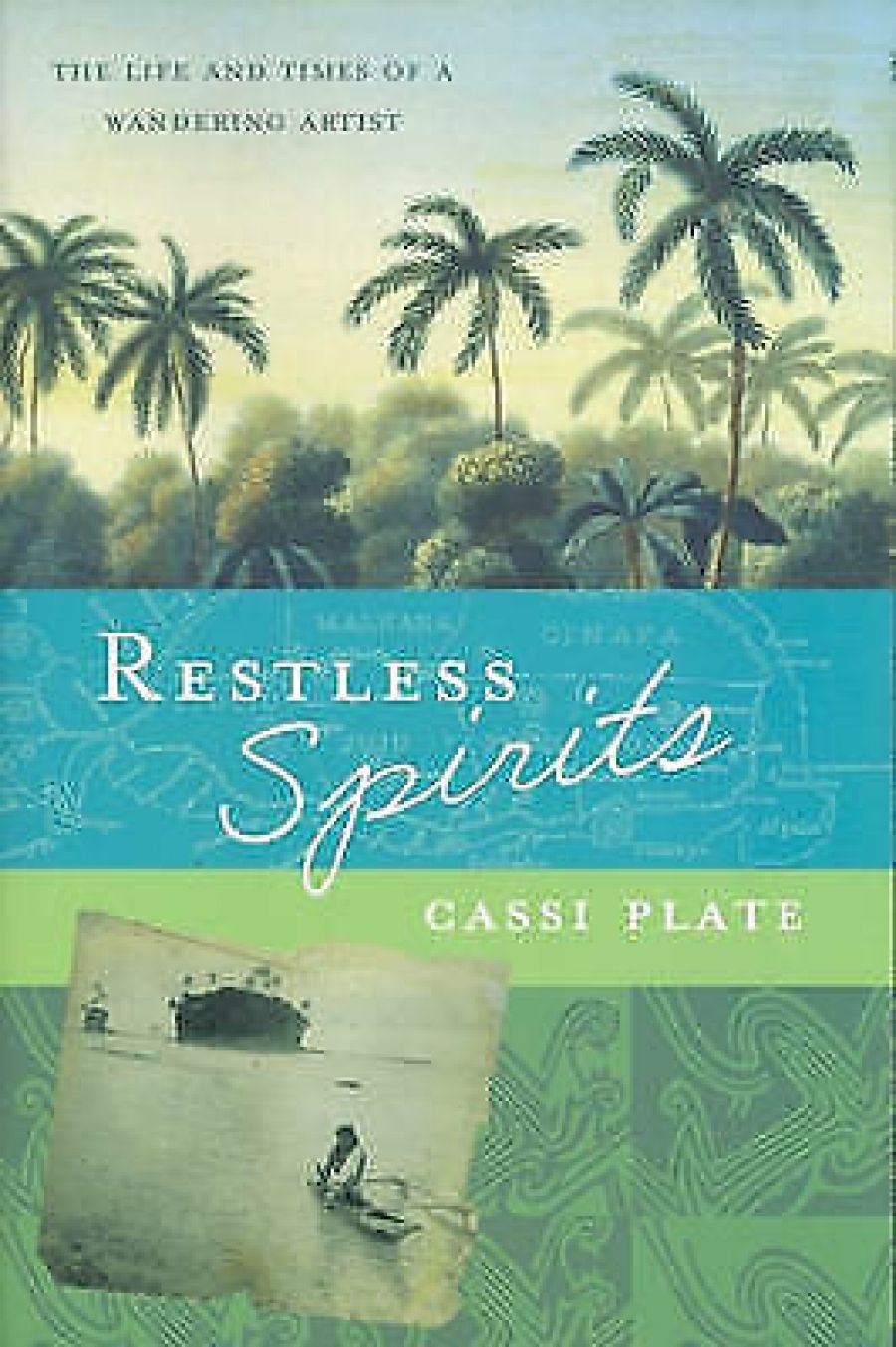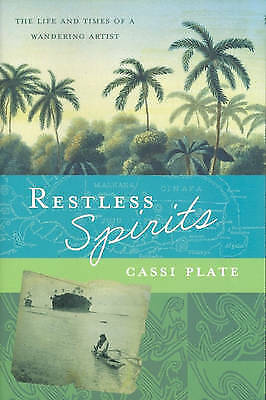
- Free Article: No
- Contents Category: Biography
- Review Article: Yes
- Article Title: Ceaseless movement
- Online Only: No
- Custom Highlight Text:
Adolf Gustav Plate (1874–1913) was a German artist, photographer and writer who spent much of his youth on merchant vessels in the South Pacific, eventually settling (or trying to settle) in Australia. Cassi Plate, his granddaughter, researched his life for a higher degree at the University of Sydney; her thesis has now been revised for publication (the first of six such volumes to be published by Picador in association with the University of Sydney, as reported in ‘Advances’ last month).
- Book 1 Title: Restless Spirits
- Book 1 Biblio: Picador, $30 pb, 337 pp
- Book 1 Cover Small (400 x 600):

- Book 1 Cover (800 x 1200):

Adolf Plate was sent to sea at thirteen by a grandmother unable or unwilling to support him after the death of his mother and the desertion of his father. While making his living by working on German ships trading between the Pacific islands, he managed to reinvent himself as the artist he had wanted to be all along. He eventually made a short-lived reputation for himself in Western Australia, not only as an artist but as the founder and editor of the intellectual journal The Leeuwin. His travel books on Australasia and the Pacific Islands were published in German and English. However, despite his efforts at establishing careers for himself as a photographer, travel writer, farmer and artist, both on the islands and in Australia, a combination of bad luck and timing appear to have militated against his ever sustaining a successful venture. He died young, during an operation for cancer in Sydney, leaving a widow and two young children, and ‘a lingering sadness over the lives of his descendants’. The year was 1913: in some ways he was lucky to avoid the outbreak of World War I and the violent anti-German sentiments that ensued in Australia.
Adolf lived in no one place for long. He was in Samoa at the same time as Robert Louis Stevenson. As an artist, he was invited to the Stevensons’ gatherings and the famous writer befriended him, both men studying Samoan. As a youngster, he had a knack for friendships with islanders of the South Pacific. He learned to speak and write Fijian, and letters from Fijian friends survive, as do some distinctly odd photographs, such as that of the baby-faced Adolf, at sixteen, dressed in tropical whites seen leaning on a rifle while standing between two seated Fijians in full warrior garb.
Plate has used documents and photographs to track her grandfather’s life, selecting from ‘a legacy of thousands of images and published words’. Several photographs and some of Adolf’s drawings and paintings have been reproduced either in black and white or in colour. The colour illustrations show striking, rich-toned paintings of Pacific and Australian scenes. The light in the landscapes, especially, is quite remarkable; even these small reproductions glow with a moody atmosphere that is almost tangible.
This book’s origin in an academic thesis is evident from the careful contextualisation of Adolf’s life in the cultural and political history of the Pacific in the late nineteenth century, and from the introduction of various cultural theories. Walter Benjamin, Sigmund Freud, Michel Foucault and Roland Barthes are all brought in as expert witnesses, as well as Samoan writer Albert Wendt. On the other hand, it is sometimes difficult to know where to draw the line between known fact and speculation. Plate claims: ‘I learnt to read images as fluently as words, to find meaning in the smallest of things and in the spaces between them.’ The literal accuracy of the meanings she finds is not always proven, but perhaps this is not important, since the framework of the book is explicitly a personal journey of discovery. ‘Following my grandfather’s ceaseless movement has quelled my own restlessness,’ she says. ‘I no longer believe that life is to be found elsewhere.’ And, somewhat sententiously: ‘Our ancestors’ stories help weave a map of who we are, why we’re here and, for some of us, what it means to be on another’s land.’ The fact that Adolf himself was dispossessed – exiled from his homeland at a fearfully young age – doesn’t seem to worry his granddaughter unduly.
Plate is at pains to distance herself from her grandfather’s world view, sometimes to a ridiculous extent. In his travel guide to Australasia, she tells us: ‘Using contemporary terminology, he told readers there were “only 4,287 full blooded aboriginals [sic] and nomadic half castes”‘ in New South Wales. One is at a loss to see what other kind of terminology he would use, and the insertion of [sic] after the use of ‘aboriginals’ as a noun, now considered politically incorrect, can be seen as a defensive assertion of ideological righteousness on Cassi Plate’s part.
Overwritten at times – ‘a creek channelling water rushing down from the hills’, ‘the verdant jungle springing to life around them’ – Restless Spirits is nevertheless a worthwhile book about an interesting man who lived in interesting times, and a sincere attempt at imagining the life of someone whose achievements have not deserved the obscurity in which history has clouded them.


Comments powered by CComment